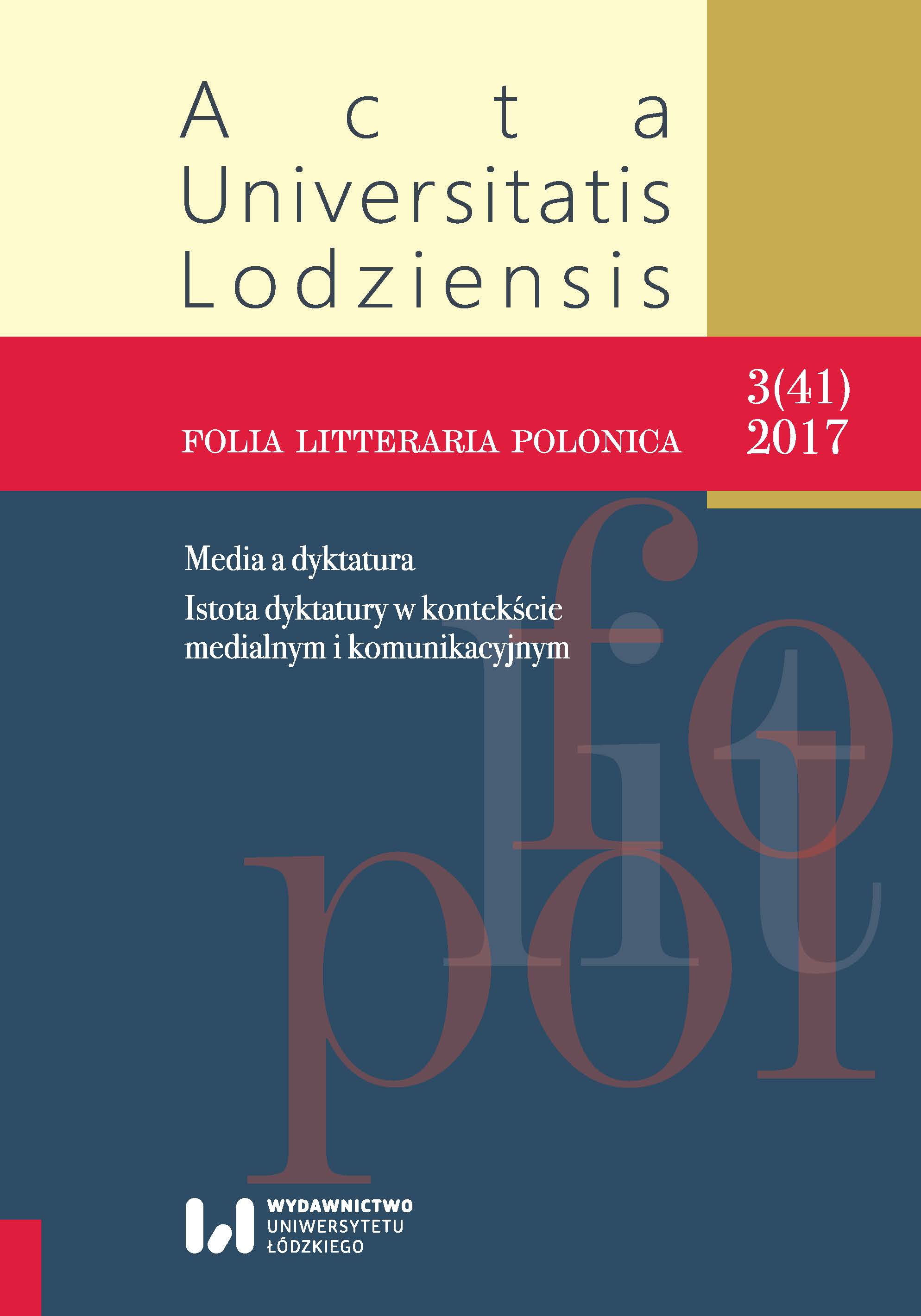Propaganda i rzeczywistość nazistowska widziana oczami dziecka w powieści Johna Boyne’a Chłopiec w pasiastej piżamie
DOI:
https://doi.org/10.18778/1505-9057.41.08Słowa kluczowe:
Nazi propaganda, concentration camp, fence, racial identity, Jew, perpetrator, victimAbstrakt
The aim of the article is to present the Nazi reality and its propaganda as seen through the eyes of Bruno – the hero of the novel John Boyne’s The Boy in the Striped Pyjamas. The narrative shown from the perspective of a child reveals, in a unique way, the mechanics of demagogy and manipulation used by the Nazi propaganda. The symbolic fence between Bruno, the son of the concentration camp commandant, and a Jewish boy of the same age named Schmul, becomes the main theme of the novel. The story of the novel reveals the entanglement of the children in the workings of the history. Such a story construction is a starting point for the author of the article for the analysis of the complexity of propaganda measures and their influence on a young person, mainly in the affective, intellectual and social dimensions. The analysis involves not only the linguistic layer of the novel, but also the topography of the place and the characteristic use of Nazi symbols.
Pobrania
Bibliografia
Baran S.J., Davis D.K., Teorie komunikowania masowego, przeł. A. Sadza, Wydawnictwo Uniwersytetu Jagiellońskiego, Kraków 2007.
Google Scholar
Boyne J., Chłopiec w pasiastej piżamie, przeł. P. Łopatka, Wydawnictwo Replika, Zakrzewo 2013.
Google Scholar
Cieślar P., Operacje i techniki operacyjne, Wydawnictwo AON, Warszawa 2009.
Google Scholar
Dobek-Ostrowska B., Komunikowanie polityczne i publiczne, Wydawnictwo Naukowe PWN, Warszawa 2011.
Google Scholar
Doob L., Public Opinion and Propaganda, Cresset Press, London 1949.
Google Scholar
Grzegorzewski K., „Judenfrage”. Retoryczny obraz propagandy antysemickiej w III Rzeszy (na przykładzie publicznych wypowiedzi Adolfa Hitlera i innych polityków NSDAP w latach 1933–1945), „Acta Universitatis Lodziensis. Folia Litteraria Polonica” 2011, nr 14, s. 141–153.
Google Scholar
Karwat M., Sztuka manipulacji politycznej, Wydawnictwo Adam Marszałek, Toruń 2001.
Google Scholar
Kossecki J., Totalna wojna informacyjna XX wieku a II RP, Wydawnictwo WSP, Kielce 1997.
Google Scholar
Lasswell H.D., Propaganda Technique in the World War, Alfred A. Knopf, New York 1927.
Google Scholar
Mazur M., Propagandowy obraz świata. Polityczne kampanie prasowe w PRL 1956–1980, Wydawnictwo Trio, Warszawa 2003.
Google Scholar
Ostrowski M., Literatura obozowa w jej funkcji „oral history” a propaganda PRL, Wydawnictwo Primum Verbum, Łódź 2013.
Google Scholar
Patrick B.A., 10 przykazań propagandy, przekł. J. Sugiero, Wydawnictwo Helion, Gliwice 2015.
Google Scholar
Szulczewski M., Propaganda polityczna. Zarys problematyki teoretycznej, Wydawnictwo Książka i Wiedza, Warszawa 1972.
Google Scholar
Szymanowski M., Wartości narodowe w komunistycznej propagandzie Czechosłowacji, Polski i Węgier w prasie lat 1949–1953, Księgarnia Akademicka, Kraków 2010.
Google Scholar
Welch D., The Third Reich. Politics and Propaganda, Routledge, London, New York 1995.
Google Scholar
Pobrania
Opublikowane
Jak cytować
Numer
Dział
Licencja

Utwór dostępny jest na licencji Creative Commons Uznanie autorstwa – Użycie niekomercyjne – Bez utworów zależnych 4.0 Międzynarodowe.











